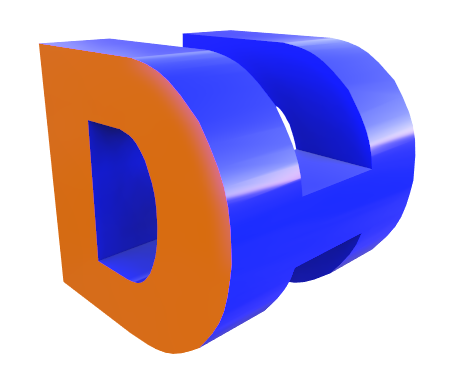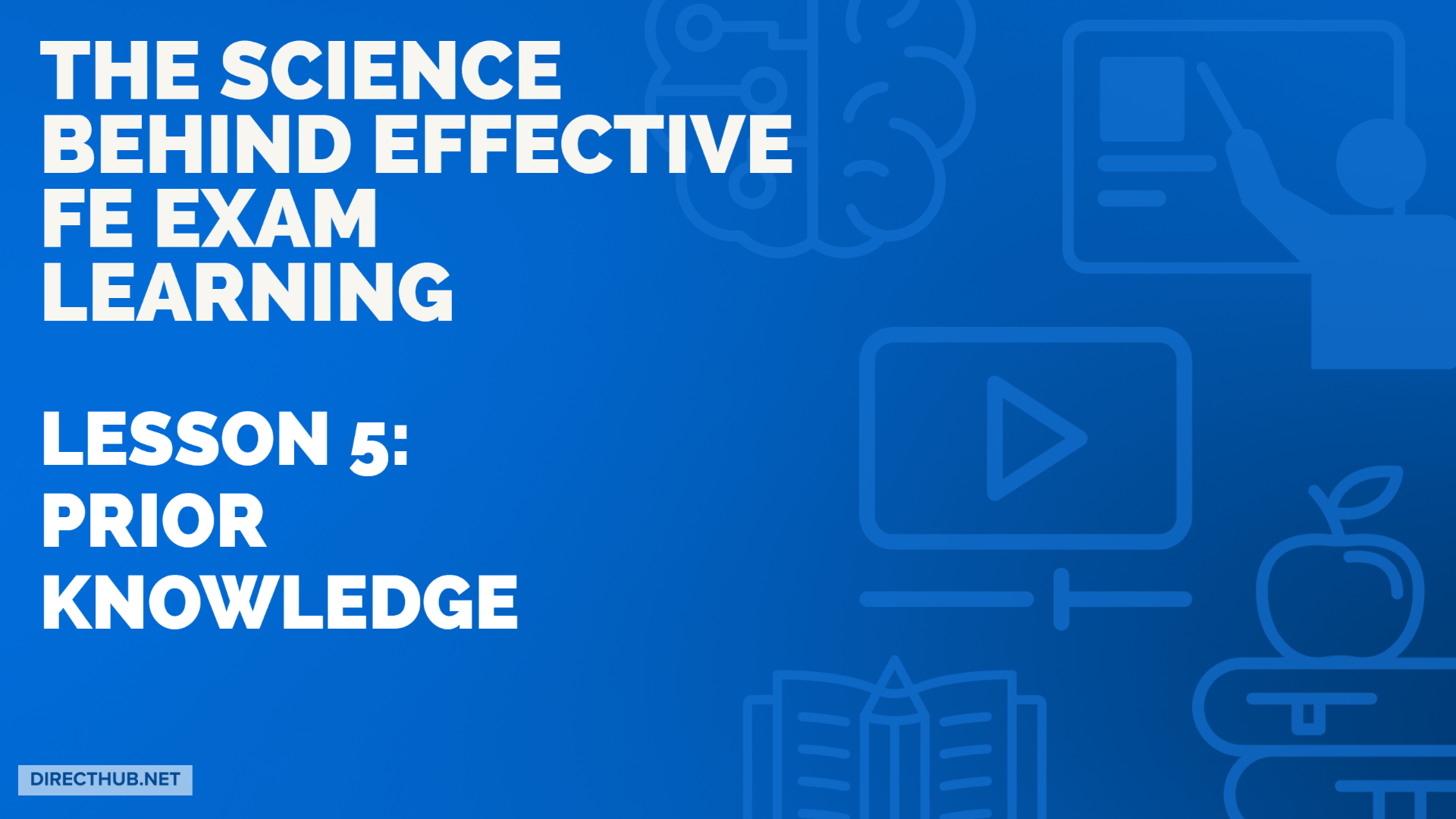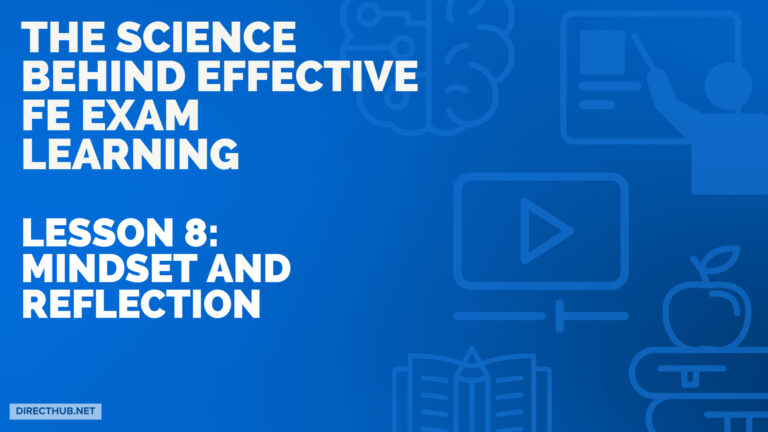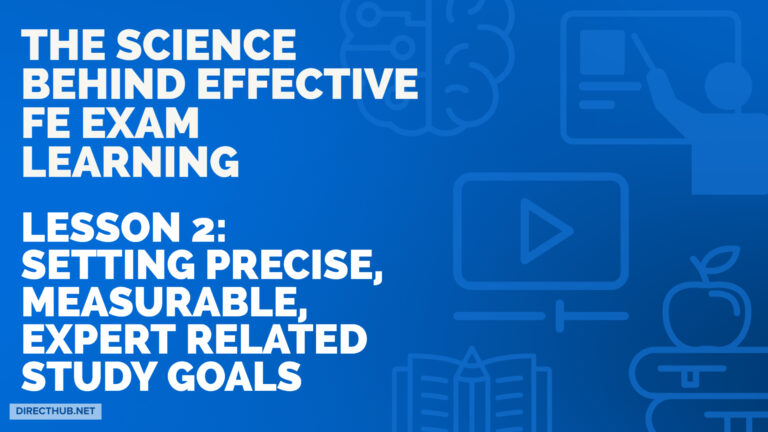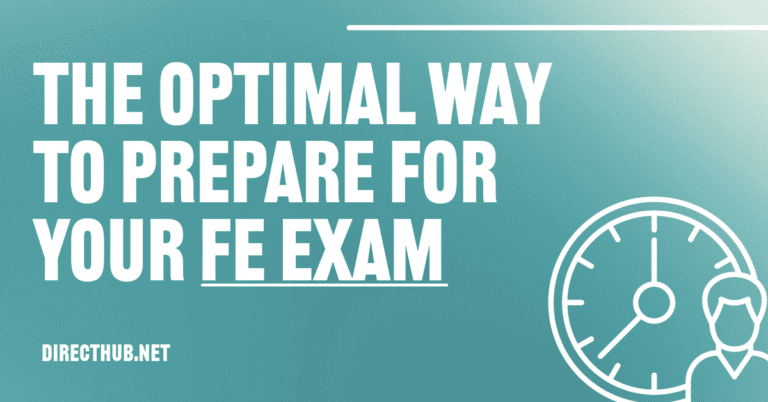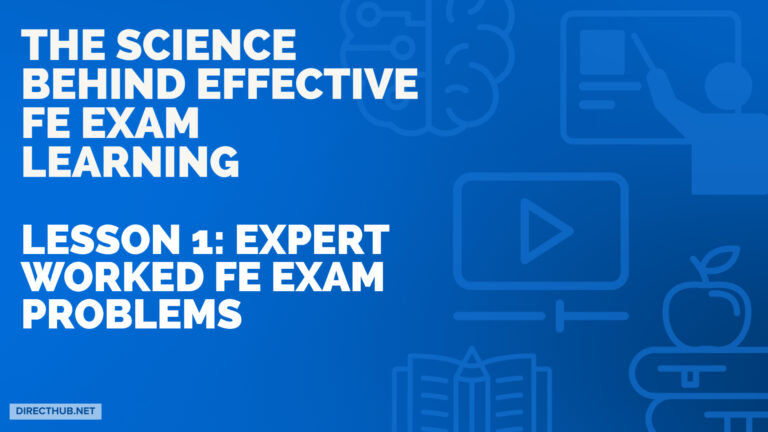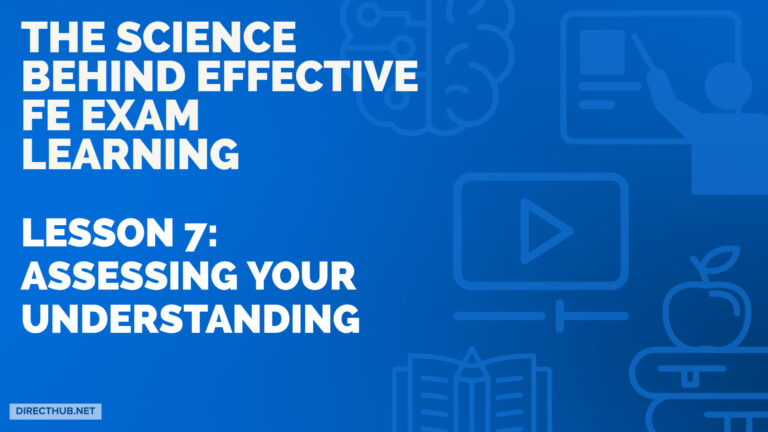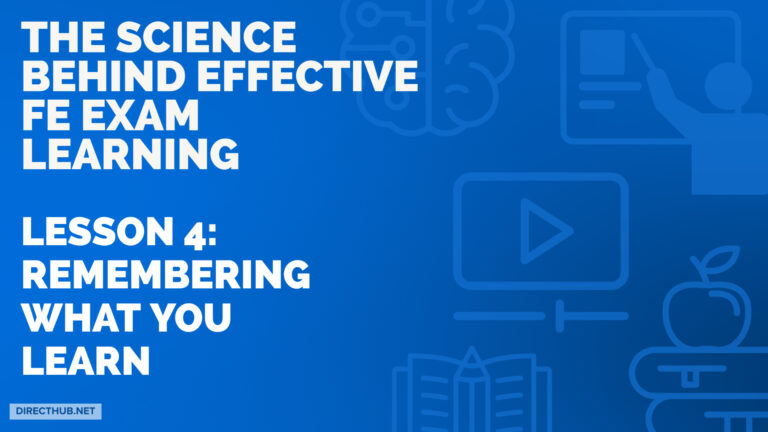Lesson 5: The Order of FE Exam Knowledge
Last lesson, we covered effective ways to remember what you learn as you’re preparing for the FE exam.
Today, we will discuss the important role prior knowledge plays in helping you learn and retain what you’re studying. Our comprehension of new information can be improved by activating our prior knowledge, a process that helps us make connections between new information and information we already know.
Any new material we try to learn is built on prior knowledge. When seeing a new concept, we are trying to remember something to help make it “stick” to something else: a prior concept, an equation, a diagram, or even a mnemonic device. We are trying to organize this new information into our heads to better remember it.
The Order Prior Knowledge
When starting a new FE section, it is a lot easier to learn new concepts by having the relevant prior knowledge. The challenge is knowing what prior knowledge is relevant and how to activate this knowledge effectively. For example, when learning about shear and moment diagrams, you would be thrown for a loop if you were to attempt to solve shear and moment diagram questions without having mastered the skill of solving for beam reactions. In this case, the relevant prior knowledge would be Statics 2D Equilibrium, which is needed to analyze Mechanics of Materials – Shear and Moment diagrams.
You may be asking this. What’s the optimal sequence of studying these FE sections where the prior knowledge from one section builds on the next section? The ordered topics listed in the FE Exam Specifications already take this into account – Statics comes before Dynamics, Fluid Mechanics comes before Water Resources, and so on.
Also, you can strategically study the FE sections in a sequence where each section builds on the next WITHOUT having to remove yourself from using certain concepts and equations for too long. The big advantage behind this approach is that you can relate prior knowledge from the previous section to the current section, ultimately building connections, reinforcement, and building associations in a short time frame.
For example, covering Mathematics will expose you to the process of analyzing Geometric Areas. This skill is often applicable when solving Statics questions involving centroids. You’re effectively reinforcing the prior knowledge you learned in Mathematics in a shorter time frame when solving Statics problems.
For the 2022 Civil FE exam, I would study the topics in this order to make sure I am building on each section without being too far removed from the concepts learned in a previous section:
- Mathematics and Statistics
- Statics
- Dynamics
- Mechanics of Materials
- Structural Engineering
- Fluid Mechanics
- Water Resources and Environmental Engineering
- Materials
- Geotechnical Engineering
- Surveying
- Construction Engineering
- Transportation Engineering
- Engineering Economics
- Ethics and Professional Practice
Conceptual Prior Knowledge
Sometimes, your prior knowledge can inhibit your learning. For example, you may see a FE Fluids Practice question asking you to solve for the pressure at a point. You have a basic understanding that finding fluid pressure usually involves the application of the Bernoulli Equation. Intuitively, you jump into applying the equation. But this gets you nowhere.
What happened here? Why did you get stuck? You are using your prior knowledge of simply applying an equation WITHOUT having a solid grasp of the concept. You have prior knowledge, but it’s not the conceptual prior knowledge needed to solve a variety of questions that rely on a broad understanding of the CONCEPT and EQUATION.
This brings us to an important point.
Research has shown students who are exposed to the concepts or even better, those who discover the concept underlying a certain equation are able to solve problems more effectively than students who are immediately exposed to the equation.
Discovering concepts is well beyond something like the FE exam. But the understanding of the concept will definitely be tested. You will need to do the hard work in making sure you’re using a good course, book, practice portal that doesn’t only teach you how to use the equations but also teaches you the underlying assumptions, definitions, relationships, and practical applications behind the equations.
This conceptual prior knowledge will give you a broad conceptual framework you can apply to a variety of problems with different contexts.
Keeping a note log of mistakes or confusions
When preparing and solving problems, you will make a lot of mistakes and errors. This can be used as an effective form of feedback to help you discover any prior knowledge you are missing that makes you get stuck, get confused, or make mistakes. You can try this:
If you get a question wrong, mark down a short reason why you got it wrong. Is it because you do not have prior knowledge or prior solid understanding of the concept or equation?
- If it’s a previous concept you did not cover, go back and cover the concept then write down how this concept is essential to solving this question.
- If it was a concept that you forgot, write the concept out next to the incorrect question.
- If it was a calculation error, write the correct calculation in red pen next to your work.
- If you are misreading a problem statement, write down why this happened and what part of the problem statement you are misreading.
- If I got it wrong for something “avoidable” (like a silly mistake), write down this silly mistake.
Your mistake note log doesn’t have to be exhaustive. Keep it simple and organized.
How Can These Ideas Help with your FE exam prep?
When solving a new practice problem or learning a new concept, ask, “Why would this be the case?” These “why” questions will help you remember a specific set of facts by forcing you to draw on prior knowledge.
Seek out experiences that might prepare you to learn. Can you engage your brain in thinking about the concept before solving problems? Can you try to solve a problem first, before looking at the solution? If so, think of this activity as less about getting the answer right and more about trying to understand the structure of the problem.
Keep track of all your mistakes, errors, and confusions. Use this as a form of feedback to close any knowledge gaps you may have.

